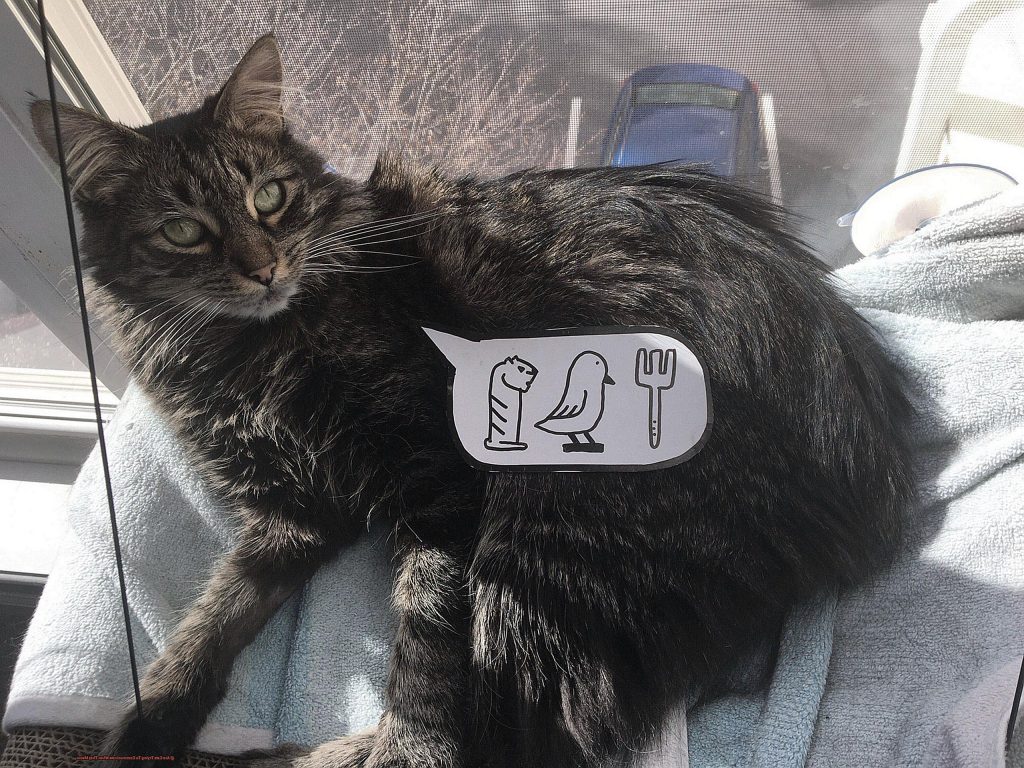The mysterious animals that live in our homes and seem to be free to do what they want. Even though they move gracefully and act cool, there’s one thing that always gets our attention: the way they meow.
This is how cats talk to us: they purr, which can be soft or loud, or they yowl. But what are they really trying to say?
Do they meow just to get our attention, or is there something else going on? Come with me as we explore the world of cat conversation and try to figure out what their meows mean.
Take your animal friend with you, and let’s start this trip together.
Are Cats Trying To Communicate When They Meow?
Contents
Cats seem to use this sound to get our attention, whether it’s a soft, sweet meow or a loud, demanding one. But does meowing really help cats talk to each other? If that’s the case, what do they want to say?
Let’s look into the study and discover the reasons why cats meow.
Kids cats learn how to meow from their mother when they are kittens. Cats mostly talk to each other in the wild by marking their territory with their smell and body language. But cats that live in homes have learned to meow as a way to talk to people. This is why cats that live outside don’t meow as much as cats that live inside.
Then why do cats meow? To get our attention is the easy answer. The way cats tell us what they need and want is by meowing. Different meows can mean different things. For example, a high-pitched meow can mean that the cat is hungry, while a low-pitched growling meow can mean that the cat is angry.
It is important to remember, though, that meowing isn’t the only way cats talk. They also talk to people and other cats with their bodies, like by moving their tails and making facial expressions. That’s why they meow sometimes to get our attention, but it’s not their main way of talking.
It’s also important to note that cats may meow as a way to train or trick other cats. Cats are very social, so they learn very quickly which sounds make their owners want to give them what they want. That is, if your cat knows that meowing in a certain way will get them treats or attention, they will keep doing it.
Also, different cats may meow more than others because of their traits and life situations. One example is a cat that has been around kids or other loud noises may meow more often than a cat that has grown up in a quiet home.
As cat parents, we need to pay close attention to our cats’ body language and other sounds they make to better understand what they need and want. Cats meowing can also mean they are sick or in pain, so it is important to pay attention to any changes in how they meow and get them to the vet if needed.
The Evolution of Meowing in Domesticated Cats
As cat owners, we are all familiar with that distinct meowing sound that our furry friends use to communicate with us. But did you know that this behavior is relatively new in the grand scheme of feline evolution? In fact, meowing has only evolved within the past few hundred years and is primarily used by domesticated cats to communicate with their human owners.
In this section, we will delve into the research and explore how meowing has evolved from a form of communication in the wild to a learned behavior from humans.
Meowing: A Recent Form of Communication
Cats have been domesticated for over 10,000 years, but until recently, they were not known for meowing as a form of communication. In the wild, cats use a variety of vocalizations to communicate with each other, including purring, hissing, and growling. However, meowing is believed to have evolved within the past few hundred years as a way for domesticated cats to communicate with humans.
The Bond between Cats and Humans
One of the main reasons why meowing has evolved in domesticated cats is due to their close bond and dependence on their human owners. Unlike their wild counterparts, domesticated cats rely on humans for food, shelter, and companionship. Meowing may have initially been a kitten-like behavior that domesticated cats carried over into adulthood to communicate their needs and desires to their human caregivers.
Learned Behavior from Humans
In addition to being a natural behavior for kittens, meowing may also be a learned behavior from observing other cats or from receiving positive reinforcement from humans. If a cat learns that meowing will get them attention or food from their owner, they are likely to continue using this tactic. This learned behavior can also be seen in cats that have been trained to do tricks or respond to specific commands through meowing.
Selective Breeding and the Evolution of Meowing
Some experts suggest that selective breeding for more vocal cats may have played a role in the evolution of meowing in domesticated felines. As humans bred cats for different traits, such as a particular coat color or personality, they may have unintentionally selected for more vocal cats. This could explain why some cat breeds, like Siamese and Bengal cats, are known for being particularly loud and vocal.
The Difference Between Feral and Domesticated Cats’ Communication Styles
As cat owners, we all know that our feline friends have a variety of ways to communicate with us. From their playful purrs to their demanding meows, they have a way of getting their message across.
But did you know that there are significant differences in the way feral and domesticated cats communicate? As an expert on the topic, I’m here to share with you the key differences between these two types of cats.
Body Language vs. Vocalization
One of the main differences between feral and domesticated cats’ communication styles is their reliance on body language versus vocalization.
Feral cats, who have never been domesticated and live in the wild or on the streets, primarily communicate through body language.
This includes hissing, growling, and tail movements. This is because they are often solitary creatures and do not rely on vocalization for communication.
On the other hand, domesticated cats have developed a wider range of vocalizations to communicate with humans. This includes meowing, purring, chirping, and even trilling. Meowing, in particular, is not a natural form of communication for cats and is believed to have evolved as a way for domesticated cats to communicate with humans.
Variations in Meows
Studies have shown that cats vary their meows depending on the situation and the person they are trying to communicate with. For example, a cat may use a different tone or pitch when meowing at their owner compared to a stranger. This shows that domesticated cats have adapted their vocalizations to effectively communicate with humans.
Subtle Body Language
While domesticated cats also use body language to communicate, it is often more subtle and less aggressive compared to feral cats. This is because they have learned to coexist with humans and rely on us for food and shelter. They use subtle cues such as slow blinking, tail flicking, and rubbing against us to express their feelings.
Understanding Your Cat’s Needs
It is important for cat owners to understand these differences in communication styles in order to properly communicate with their pets and understand their needs. Feral cats may require a different approach and level of patience compared to domesticated cats, who have been socialized to interact with humans.
Reasons for Meowing: Hunger, Attention, and Greeting
Cats are known for being mysterious and independent, but they dont mind meowing when they want to. In fact, one of the main ways cats talk to their owners is by meowing. As a cat expert, I’ve seen cats meow for a lot of different reasons, and I’m going to tell you what I’ve learned.
One of the main reasons cats bark is to let you know they are hungry. Cats are natural animals, so they have a strong urge to let you know when they are hungry. No matter the cat’s mood or how hungry it is, this meowing can be soft and gentle or loud and constant. Your pet’s meowing while you’re making dinner is probably their way of saying “feed me.”
Cats meow for other reasons besides being hungry. Their sounds are also a way for them to get the attention of their owners. Even though cats are independent, they still want love and attention from their people. Cats may meow to get your attention when they are bored, lonely, or just want to be petted. Cats that stay inside and spend most of their time with their owners are more likely to do this.
Cats may also meow as a way to say hello. Meowing is a way for cats to let someone know they are there, just like people say “hello” when they see someone they know. When they meow at someone, whether it’s their owner or a cat they’ve paired with before, they often purr and rub up against that person or cat.
But meowing can also mean that a cat is in pain or stress. It could mean that something is wrong if your normally quiet cat starts meowing a lot or in a different tone than usual. Cat owners need to pay attention to these changes in their cats’ behavior and, if necessary, talk to a vet.
But some cats naturally meow more than others. Because it’s in their genes, breeds of cats like Siamese are known for meowing loudly and often. On the other hand, cats can learn to meow too much. If a cat meows and its owner responds with attention or food, the cat may keep doing it whenever it wants something, making the behavior stronger.

Meowing as a Form of Communication Between Cats
Whether it’s a soft meow or a loud demand for attention, we all understand our feline friends’ vocalizations to some extent. But have you ever wondered how cats use meowing to communicate with each other? As an expert on the topic, I am here to shed some light on this curious behavior and help you better understand your furry companion.
MEOWING BETWEEN CATS:
Contrary to popular belief, meowing is not the primary means of communication between cats. In fact, in the wild, cats rarely meow at each other. They have other ways of communicating such as body language and scents. However, there are some instances where cats may meow at each other, such as during mating or when a mother cat is calling for her kittens.
MEOWING WITH HUMANS:
So why do cats meow at humans? It turns out that meowing is primarily a learned behavior that they use to communicate with us. Our feline friends have picked up on the fact that meowing gets our attention and can help them get what they want. This is why they often meow when they are hungry, seeking attention, or simply want to say hello.
MEANINGS BEHIND MEOWS:
While cats may not meow at each other as much, they still use different types of meows to convey different messages. For example, a loud and insistent meow could mean that the cat is hungry or wants attention. A soft and gentle meow could indicate that they want to be petted or are feeling content. Some cats even have different meows for different things, which their owners can learn to decipher over time.
EMOTIONAL EXPRESSION:
Just like humans, cats also use their vocalizations to express their emotions. A distressed or anxious cat may let out high-pitched or continuous meows, while a happy and content cat may have softer and shorter meows. It is important for cat owners to pay attention to their cat’s meows as it can give insight into their emotional state.
MEOWING AS HUMAN IMITATION:
Interestingly, some cats may also learn to meow in order to imitate humans. This behavior is more commonly seen in cats that have been raised in close proximity to humans and have picked up on our communication habits. These cats may use meowing as a way to interact and bond with their human companions.
Different Types of Meows and Their Meanings
This blog post will go into the world of cat meows and explain what they mean.
To begin, it’s important to remember that meowing is not the main way cats talk to each other. Cats that are adults don’t really meow to talk to each other. Cats that live in homes have learned to meow as a way to interact with people. In other words, your cat is trying to tell you something when it meows at you.
What do these different kinds of meows mean? The welcome meow is the first one we’ll look at. This is a short, high-pitched sound that cats make to greet their owners and show they love them. You may also notice that your cat rubs against your legs while it meows. This is another way for it to show love and welcome you home.
The next one is the pushy meow. Cats use this louder, more demanding meow to get food or attention. This meow is a clear sign that your cat wants something from you, like playing or dinner.
A crisis bark, on the other hand, is a very loud sound that cats make when they are in pain or need help right away. As a good cat owner, you need to pay attention to this type of meow and take care of any health problems your cat might be having.
A playful meow is another sound that cats make. It is usually a lower, more playful sound that they use to start playing with their owners or other cats. This kind of meow shows that your cat is active and happy, and it’s a great way to connect with your cat.
The hunting meow, the protective meow, and the begging meow are some other types of meows. Cats make a special sound when they are looking for food, called a “hunting meow.” Another sound they make is a “territorial meow,” which is loud and long to let other animals know they don’t belong there. Pleading meow, also called begging meow, is a soft sound cats make when they beg their owners for something, like treats or to go outside.
It is also important to know that cats talk with their bodies as well as their meows. As an example, a cat that is angry at another animal might stretch its back, hiss, or even growl while making a possessive meow.
Body Language: How Cats Communicate Non-Verbally
They meow, purr, and make other unique sounds to communicate with us. But did you know that cats also use their body language to convey their thoughts and emotions? That’s right – our feline companions are masters of non-verbal communication, and it’s time we decode their secret language.
Tail-Talk: The Key to Understanding Your Cat’s Mood
One of the most significant ways cats use their body language is through their tails. A cat’s tail can tell us a lot about how they’re feeling. For example, a high and straight tail signifies confidence and happiness, while a tucked tail indicates fear or submission. So next time your cat greets you with an upright tail, you know they are happy to see you.
Purr-fectly Complex: The Multifaceted Meaning Behind Purring
We all know that cats purr when they’re content, but did you know that purring can also be a sign of other emotions? Yes, that’s right – cats use purring to communicate anxiety or pain as well. So pay attention to the context in which your cat is purring to understand what they’re trying to tell you.
Ears Up, Ears Down: The Role of Ears in Cat Communication
Cats also use their ears to communicate non-verbally. When their ears are forward, it shows they’re alert and interested, while flattened ears indicate aggression or fear. Keep an eye on your cat’s ears to get a better understanding of their mood and intentions.
The Eyes Have It: The Power of Eye Contact
Just like humans, cats also use eye contact to communicate. Direct eye contact can be seen as a challenge or threat, while slow blinking can be a sign of affection and trust. So next time your cat gives you a long stare, they may not be trying to intimidate you – they could be showing their love and trust.
Posturing for Communication: What Your Cat’s Body Position Says
A cat’s posture can also reveal a lot about their intentions. An arched back and puffed-up fur indicate aggression, while a relaxed and stretched out position shows contentment. Keep an eye on your cat’s body language to understand their mood and prevent potential conflicts.
Conclusion
In conclusion, while cats may not be trying to communicate with specific words when they meow, their vocalizations are still a form of communication.
Through their meows, cats can express a range of emotions and needs, from hunger and affection to fear and frustration. They also use different types of meows for different situations, showing that they have the ability to adapt and convey meaning through their vocalizations.
Whether it’s a short and sharp meow or a prolonged and pleading one, let’s continue to listen and respond to our cats’ vocalizations with love and understanding.






